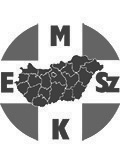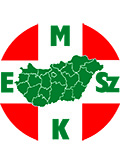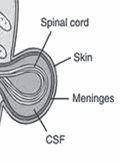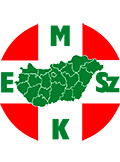The eLitMed.hu medical portal uses computer cookies for convenient operation. Detailed information can be found in the Cookie-policy.
Journal of Nursing Theory and Practice - 2017;30(02)
Content
[Examination of cardio-vascular risk factors in the priority of atrial fibrillation]
[Objectives: Stroke-prophylaxis is the biggest question regarding atrial fibrillation. Their aim is to examine the risk factors, successfulness of frequency control, and the effectiveness of anticoagulant therapy. Methods: This quantitative cross-sectional study used a non-randomized sampling method. Enrollment criteria: anticoa-gulant therapy, atrial fibrillation, age 20-90 years, NYHA stage II. Excursion criteria: patients having elective intervention that influences INR rates. Patient data was collected from the records of the University of Pécs, Cardiology Clinic between 01.01.2012-31.12. They used linear regression, T-test, χ2-test, variance analysis (ANOVA), SPSS 20.0. Results: Significant correlation between BMI values-, systolic blood pressure-, modified medication and its effect on frequency control-, correct anticoagulant therapy, INR parameters and the increased risk of thromboembolia in patients with atrial fibrillation. (p<0.05) Conclusion: Stratification of risk factors and individual optimisation of anticoagulant therapy is important for effective stroke prevention and increased survival rate.]
[An examination of knowledge about cervical cancer Roma women in Hungary]
[The aim of our study was to assess the main reasons for romany women to stay away from cervical cancer screening and knowledge about cervical cancer. Methods: We carried out a quantitative, cross-sectional study with non-probability convenience sampling in 2016. Our sample consists of romany women living in the agglomeration of Nagyatád, Hungary (N=126). In the questionnaire we measured reasons for non-attendance and knowledge. During statistical analysis we calculated descriptive statistics, χc2-test and t-test (p<0,05). Results: Mean age of responders is 37,45±12,05 years. 26,2% of women have not attended any kind of gynecological screening in their life. Mean age of women when they attended for screening for the first time was 24,05±8,96 years (n=91). Main score of the knowledge test is 31,4±3,93 points. According to knowledge level there is no connection between attendants and non-attendants(p>0,05). Conclusions: The lack of knowledge determines the participating willingness, to increase has been possible by organized knowledge transmitter performances.]
[Handling hazardous drugs during bladder instillation: epirubicin contamination with and without a closed system]
[The aim of the study: Assess epirubicin contamination during bladder instillation with or without the use of a closed system drug transfer device (CSTD). Material and Methods: Four hospital sites participated in an experimental wipe study (3 used, 1 did not use a CSTD [control]). Samples were frozen and transported to Germany for liquid chromatography analysis. Samples were taken from seven surfaces following drug reconstitution and patient administration. Group differences were analyzed by one way ANOVA. Results: There was a major difference in contamination between CSTD and non-CSTD use (F = 7,63; p < 0,001); the workflow without the use of a CSTD showed much greater amounts of epirubicin left behind. There wasn’t any difference in contamination across sites using a CSTD. Conclusions: Without a CSTD epirubicin contamination was high. The CSTD was shown to be effective to minimize the health risk of nurses. We recommend that CSTD be implemented in routine nursing practice.]
[Intermittent Clean Catheterisation (ICC)]
[In Hungary intermittent clean selfcatheterization is a method which has been used for a long time, but the intervention in pediatrics like the process, the short history of it, the method’s detailed description and the education of it is less known among nurses. ]
[Introduction of the Hungarian Hospice- Palliative Association]
[The Hungarian Hospice-Palliative Association was founded in 1995 and represents nearly a hundred national hospice organization. Our goal is to promote technical cooperation, development of end of life care to terminally ill patients, social awareness and volunteerism, social responsibility and promoting solidarity with the patients. This is accomplished by initial and continuing vocational training, organizing conferences, professional guidelines and the formulation of policies, research support and coordination of publications.]
1.
Clinical Neuroscience
[Headache registry in Szeged: Experiences regarding to migraine patients]2.
Clinical Neuroscience
[The new target population of stroke awareness campaign: Kindergarten students ]3.
Clinical Neuroscience
Is there any difference in mortality rates of atrial fibrillation detected before or after ischemic stroke?4.
Clinical Neuroscience
Factors influencing the level of stigma in Parkinson’s disease in western Turkey5.
Clinical Neuroscience
[The effects of demographic and clinical factors on the severity of poststroke aphasia]1.
2.
3.
4.
5.








